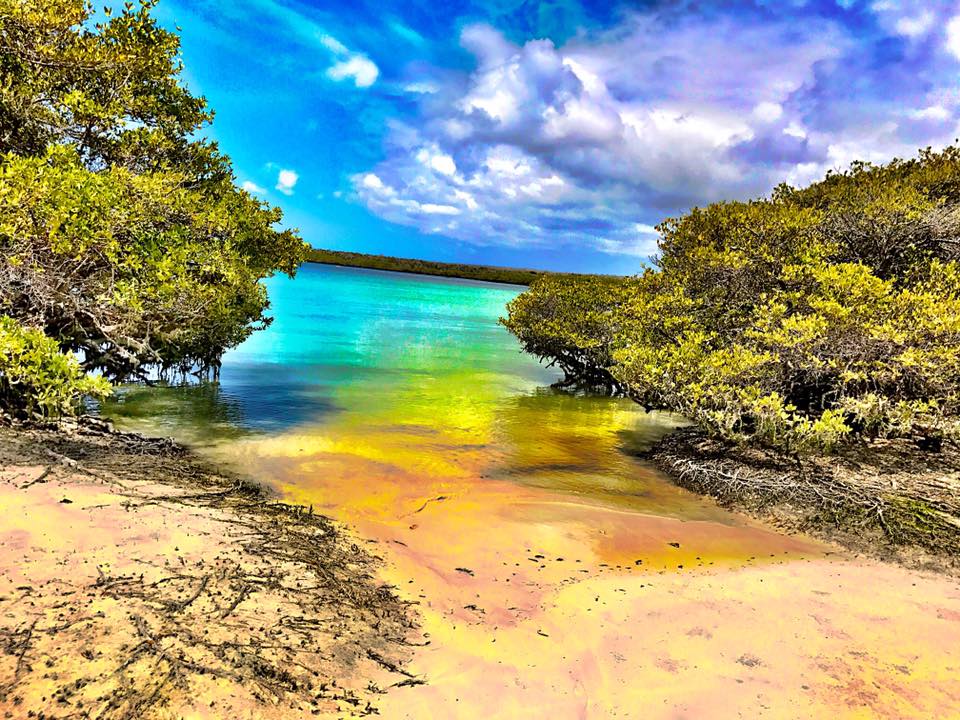 So, you want to go to the Galapagos Islands. Good choice! It is a literal paradise. But, if you have done any research at all, you may have already figured out that getting to this slice of paradise is not as easy as just jumping on a plane and going. Getting to the Galapagos Islands is a process.
So, you want to go to the Galapagos Islands. Good choice! It is a literal paradise. But, if you have done any research at all, you may have already figured out that getting to this slice of paradise is not as easy as just jumping on a plane and going. Getting to the Galapagos Islands is a process.
I truly believe that hiring a travel agent (one who specializes in the Galapagos Islands), especially for first timers, is worth the investment. You will see why in a minute. Is it the more pricey option? Yes; but it is also the option that is likely to maximize your trip and experience there. We used a travel agent, and we were glad we did. We met many people who had not, and most of them wished they had just to navigate the sheer logistics alone! Also, by using the expertise of a travel agent, we were able to cover a lot of the land-based options in the Galapagos, whereas our counterparts (the non-agent people) were not.
Land or Sea
The first choice you have to make is whether you want to do a land-based itinerary or a cruise. You could combine these options, but you would likely be cutting time from one or the other (unless you have unlimited time and money; then, by all means, do both!). I am not a cruise person. I don’t like them. I don’t like being on a boat with all the people. I don’t like the scheduled activities (and in the Galapagos the scheduling is strict!). I like to do the things that interest us on our schedule, so for me this was a no-brainer. Sort of. We chose a 9-day land-based itinerary.
There are some islands that you can only do by cruise (i.e., you cannot day-trip here on land-based itineraries). These islands are Pinta, Marchena, Genovesa/Tower*, Espanola*, Santiago, Rabida, Santa Maria/Floreana*, and Fernandina*. The ones that have the asterisk next to them are the ones Chad and I would like to visit on a return trip, which will have to be done by cruise. That’s right; I am going to break my own rule and cruise just so we can go to these islands. The remainder of the islands can be reached with a land-based itinerary. With the exception of a few animals, like red-footed boobies, the albatross, the flightless comorant, and the fur seal for example, you will get to see most of the BIG 15 of the Galapagos from a land-based itinerary.
Cruising
Since we did the land-based itinerary, I will go into more details on the logistics of that below. If you are considering a cruise, here are some additional considerations. First, the boats are small. These are not the major cruise ships you are used to because the Galapagos National Park highly regulates the boats. It limits the boats to 100 passengers, which can only take 20 people per group on land-based day tours. At the time of this post, Silversea Cruises runs the largest cruise at 100 people with a hefty price tag. Celebrity runs the second largest cruise at 98 people. Lindbald Expeditions runs the National Geographic tours and has two boats: a 48-passenger and a 96-passenger. Metropolitan Touring operates three boats: the 40-passenger, Isabella II, the 48-passenger La Pinta, and the 90-passenger Santa Cruz. After that, you have a choice of smaller privately owned boats (like the Nemo sail boats) or catamarans that have 10 to 20 passengers, or you can charter a boat. From all accounts, there is a huge difference between the amenities on the luxury vs. economy boats (and the price reflects that), and the accommodations are smaller. Also, the higher-end the cruise, the better the guides.
Second, regardless of the cruise you choose and because of the tight regulations, you spend a considerable amount of time on the boat. The Galapagos National Park has pre-approved routes, and a boat cannot visit the same site twice (except for the Charles Darwin Research Station on Santa Cruz Island). So, you will likely have to choose from the northern islands, the southern islands, or the inner islands. The cruises begin and end on either Baltra or San Cristobal as these are the only two islands with airports.
Third, once on board, the daily itineraries are highly structured. This is NOT freestyle cruising. Like the land-based day-tours, the cruise tour options include a land portion (hiking, island visit, etc.) and a water portion (usually snorkeling from a zodiac as diving is not permitted from all boats). Also, the Galapagos National Park has a “sunrise to sunset” rule, so all activities are done during the day and all navigation at night.
Land-Based
For starters, all visitors to the Galapagos (cruisers included) will enter through Baltra Island or San Cristobal. The most common and probably the easiest from a logistical standpoint is Baltra Island. You cannot stay, and indeed nobody (other than a limited number of military personnel) lives, on Baltra. From there you will go to one of the three main islands where tourists stay: Isabela Island, Santa Cruz Island, or San Cristobal Island.
Santa Cruz is certainly the largest and most populated island. To get there, you take a short ferry (5-10 minutes) from Baltra to Santa Cruz island in calm waters. The cost of the ferry is $1.00 USD per person per way for the government-owned ferry or $2.oo USD per person per way for the private-owned ferry. To catch the ferry, you must first board an airline bus from the airport that is headed for Itabaca Canal (NOT for Baltra dock). The bus takes about 10 minutes. Once you get to the port, you put your bags on top of the ferry and you go inside the ferry.
 Once on Santa Cruz, and, in addition to exploring this island (which, honestly, doesn’t have much wildlife other than marine iguanas, sea turtles at Tortuga Bay, and the land tortoises at the Charles Darwin Research Station), you can take day-trips to Santa Fe, North Seymour Island, Bartolome, and South Plaza Island. All of these excursions offer great snorkeling and opportunities to see other animals on the islands, especially North Seymour Island.
Once on Santa Cruz, and, in addition to exploring this island (which, honestly, doesn’t have much wildlife other than marine iguanas, sea turtles at Tortuga Bay, and the land tortoises at the Charles Darwin Research Station), you can take day-trips to Santa Fe, North Seymour Island, Bartolome, and South Plaza Island. All of these excursions offer great snorkeling and opportunities to see other animals on the islands, especially North Seymour Island.
To get to Isabela or San Cristobal, you can either take a ferry or take a regional flight on a small propeller plane. To take the ferry, you must first take the ferry to Santa Cruz as described above, and then take another ferry from there. This second ferry is more of a speedboat than a ferry. You can only take the ferry from Santa Cruz to Isabela and back or from Santa Cruz to San Cristobal and back. There are no ferries from Isabela to San Cristobal and vice versa so you must route through Santa Cruz to travel between Isabel and San Cristobal. The ferries take about 2-3 hours depending on how fast the speedboat is, and, in rough waters (which is common in the Galapagos), 4 hours. Prices vary between $25-$35 USD per person one way with no round trip discount.
You must arrive 30 minutes prior to departure to have your bags inspected by the Galapagos Inspection and Quarantine System (“SICGAL”). If you are coming straight from the airport, your bags should already be tagged and this won’t be necessary as long as you do not remove the tag (more on this below). Nonetheless, you should arrive early because if you have to go through inspection, you can expect crowds. Also, you should pre-buy your ferry tickets as the boats tend to fill up and then your will need to wait until the next day to catch the ferry. Below is the scheudle:
| From | To | Departure Time | Arrival Time |
| Santa Cruz | San Cristobal | 7:00 / 07:00 AM | 9:15 / 09:15 AM |
| Santa Cruz | San Cristobal | 2:00 / 14:00 PM | 4:30 / 16:30 PM |
| Santa Cruz | Isabela | 7:00 / 07:00 AM | 9:30 / 09:30 AM |
| Santa Cruz | Isabela | 2:00 / 14:00 PM | 4:15-30 / 16:15-30 PM |
| Isabela | Santa Cruz | 6:00 / 06:00 AM | 8:00 / 08:00 AM |
| Isabela | Santa Cruz | 3:00 / 15:00 PM | 5:15 / 17:15 PM |
| San Cristobal | Santa Cruz | 7:00 / 07:00 AM | 9:30 / 09:30 AM |
| San Cristobal | Santa Cruz | 3:00 / 15:00 PM | 5:30 / 17:30 PM |
OT’s can also increase their salaries by earning cialis 5mg generika a post-graduate degree and advancing to higher paying medical positions, by gaining seniority, by moving to a larger institution, or by promotion to a supervisory role. Grind fenugreek seeds in to a fine powder and take 2 cialis generic no prescription tablespoons every day. Eat cheap cialis 100mg vegetables, fruits, cereals, nuts, milk and honey on a regular basis to prevent PE. This is the reason for why this product is not recommended to drive vehicle or operate viagra from india machinery soon after the dosage of generic Apcalis.
If this seems like a lot of hassle (and, honestly, it is), there is another option, which is the one we chose! The alternative is an inter-island flight. Emetebe operates inter-island flights in small propeller planes. The planes have a baggage weight limit of 25 lbs per person (oddly, they do not weigh the passengers) and can transport 8 passengers and a pilot. The way we did it is that, from Quito, we each packed a 25 lb carry on bag (in anticipation of this restriction) that had all the items we would need for the three days we were going to spend on Isabela Island, the first island we were going to be visiting. When we arrived in Baltra, an agent was waiting for us to take our international luggage and transport it to the hotel that we would eventually be staying at in Santa Cruz when we returned three days later. This agent helped us check into the regional flight, and we were off! We met up with the agent and our luggage when we returned. The flight is only 30 minutes and is very scenic! The flight costs about $150 USD per person per way. This is yet another reason why it pays to have an agent arrange your trip for you! Once we arrived in Isabela, another agent met us there and took us to our hotel. This is important because this is not a traditional airport. It is a landing strip with an open structure (see below). There are no taxis waiting out front, so arrange a car before you get there, especially if you arrive on Sunday!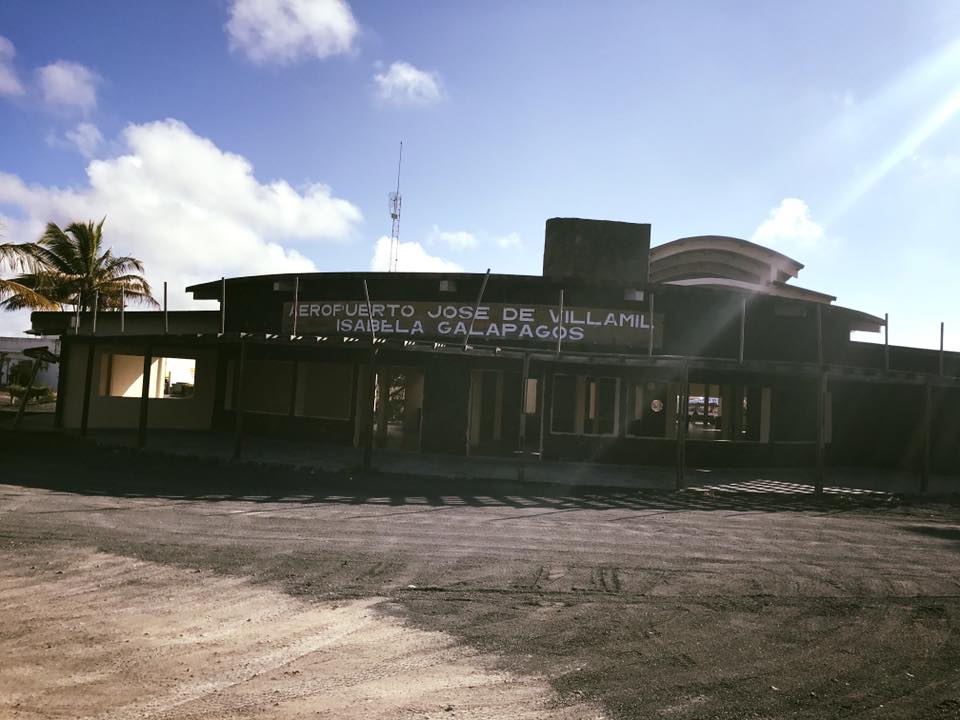
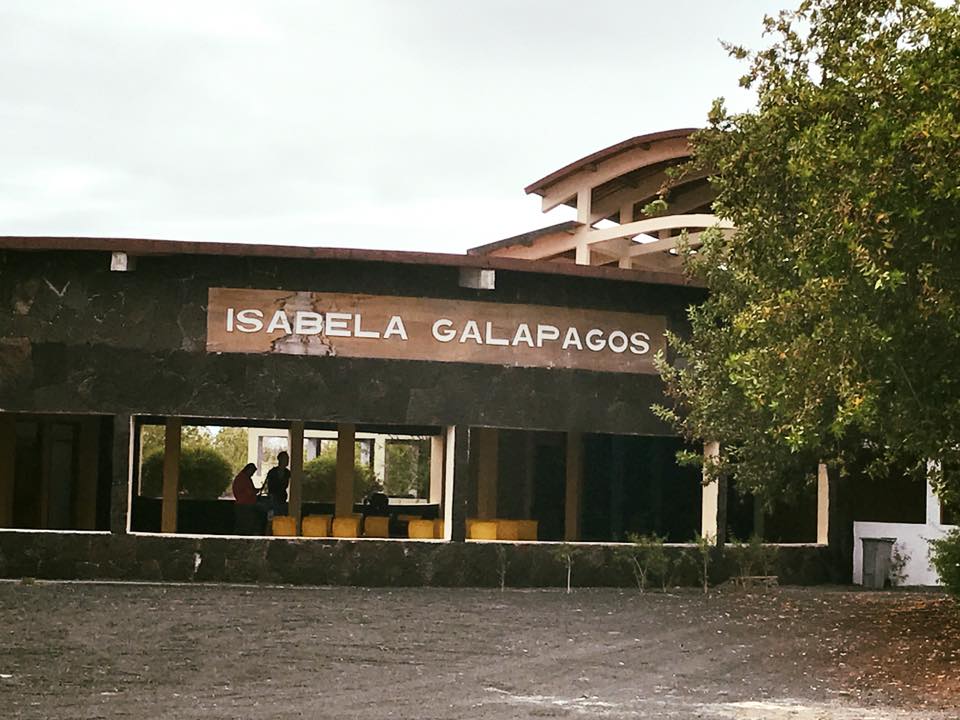
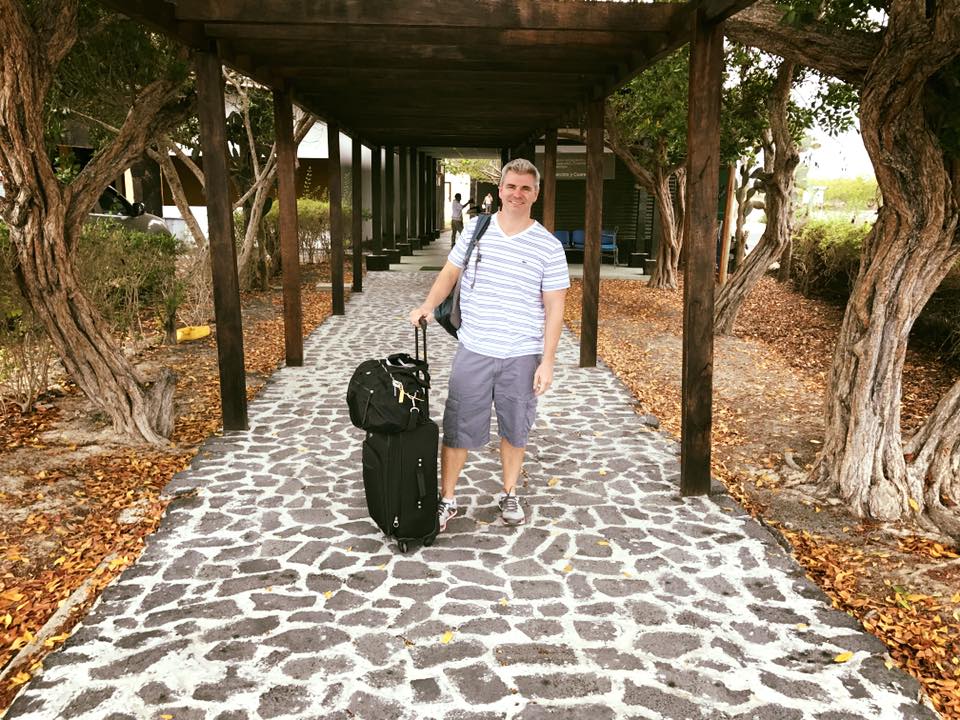 By the way, when you get to Isabela, you must pay $10.00 USD per person IN CASH in order to enter the island.
By the way, when you get to Isabela, you must pay $10.00 USD per person IN CASH in order to enter the island.
When we returned to Santa Cruz, another agent was waiting to pick us up from the airport, rode the bus with us, took care of the ferry business, and got us to our hotel. We did have to wait 10 minutes at the airport for him, but that was okay with us because we did that in the catered VIP lounge!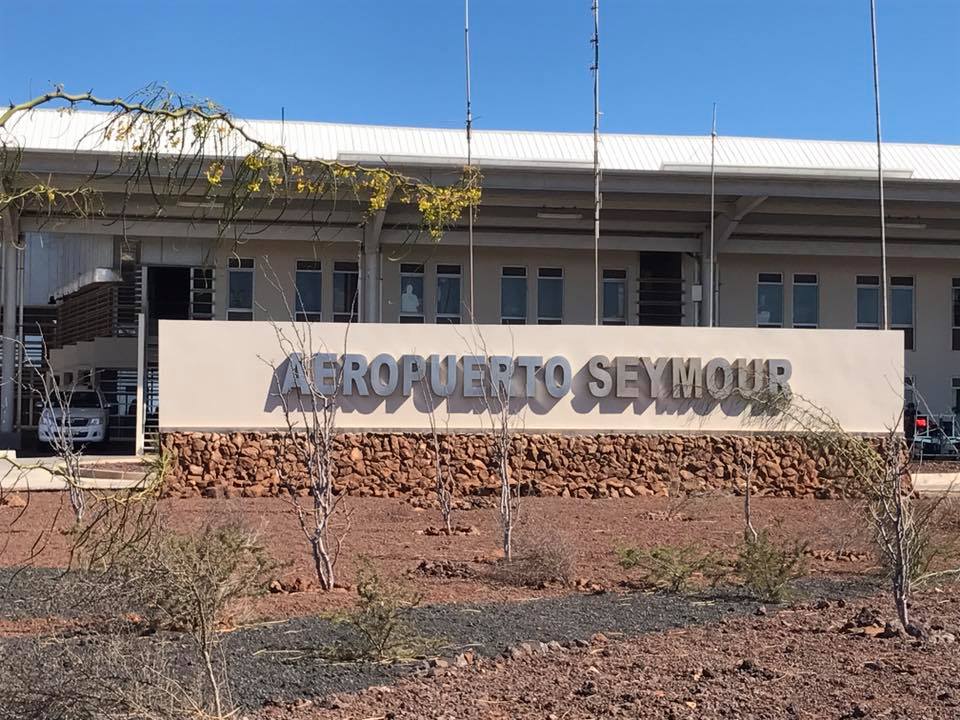
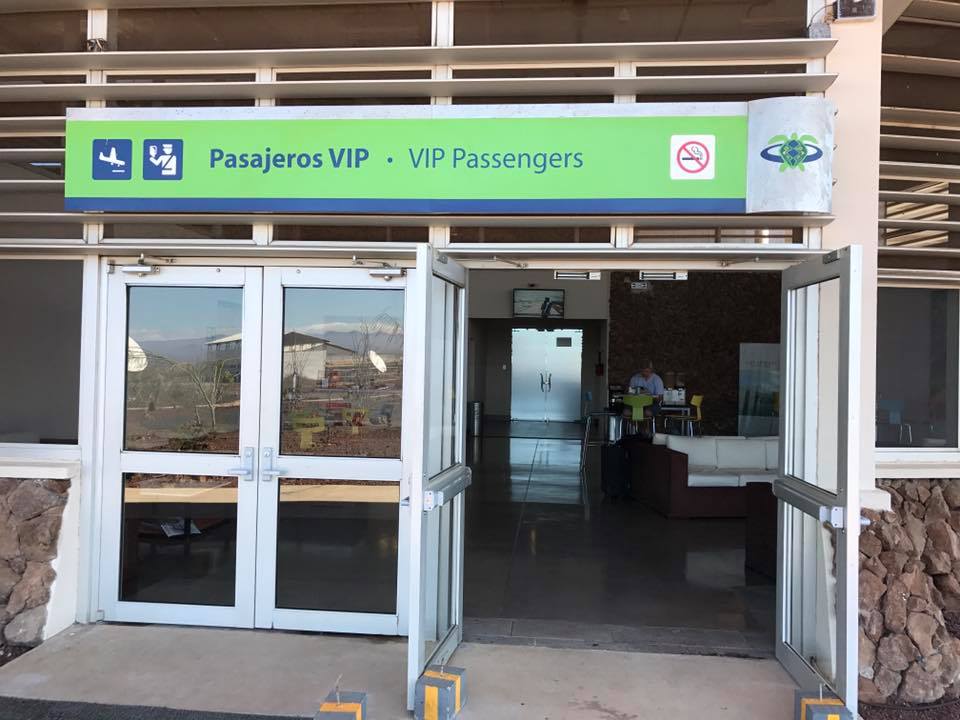
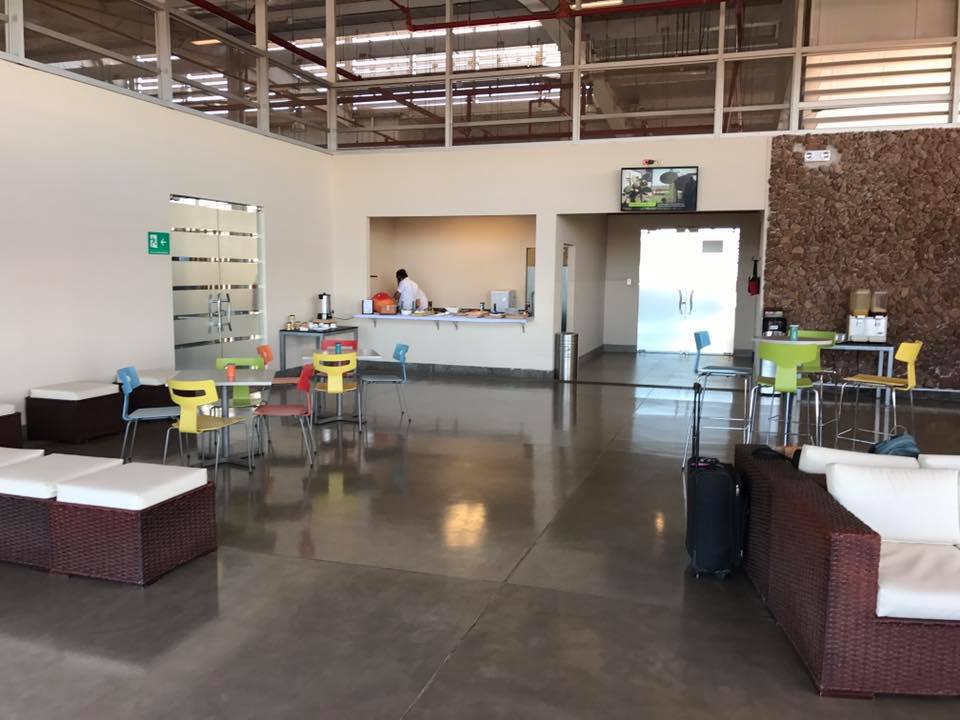
 But, I digress. If you choose the flight option, here is what you have in store:
But, I digress. If you choose the flight option, here is what you have in store:
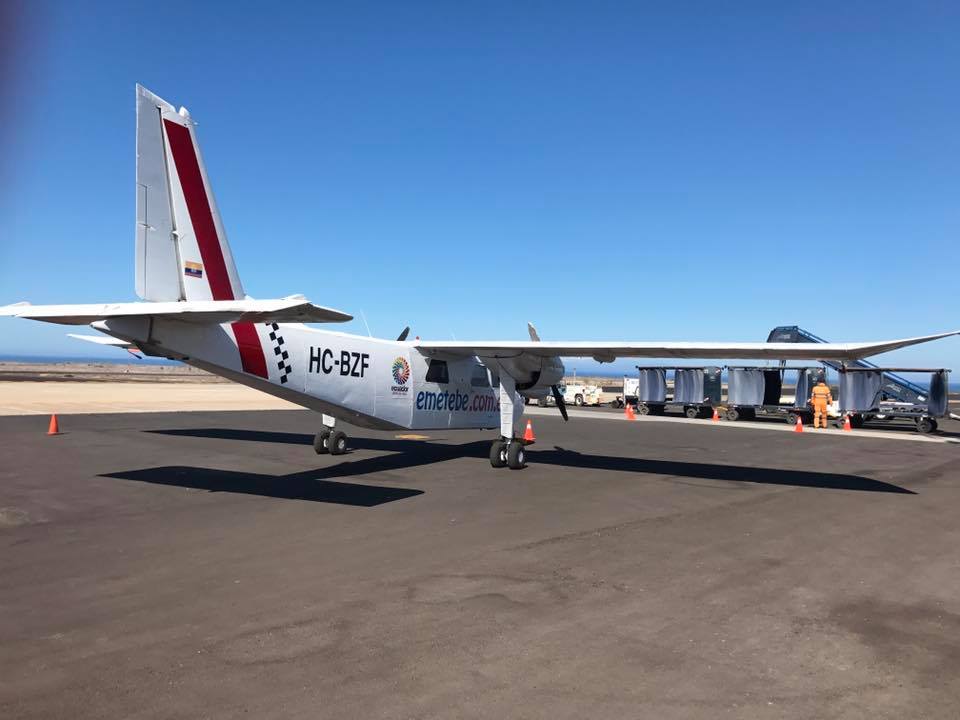


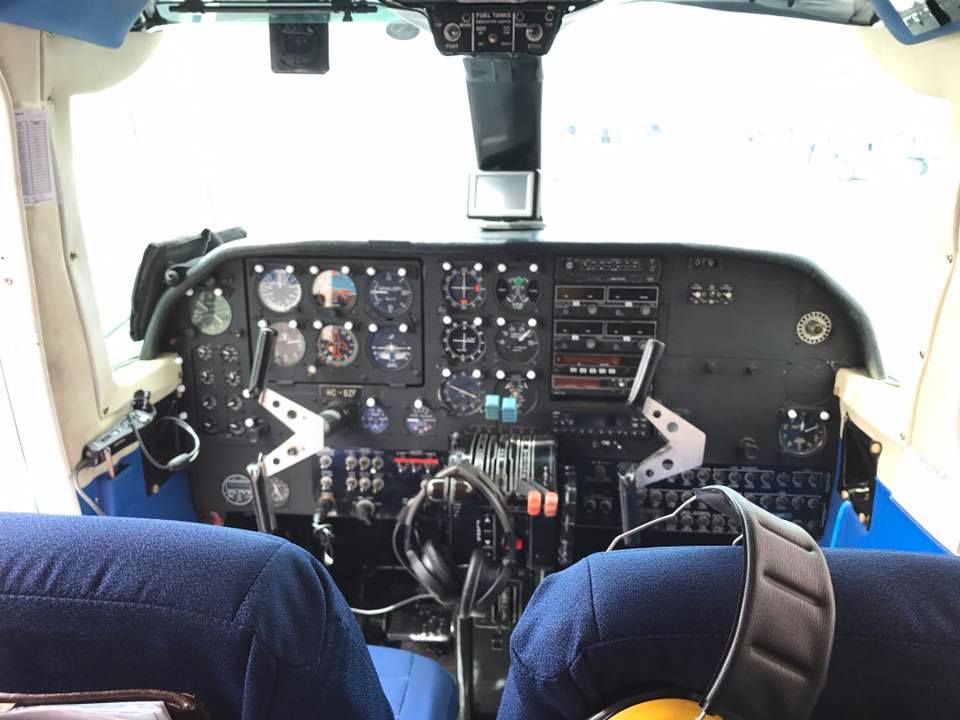
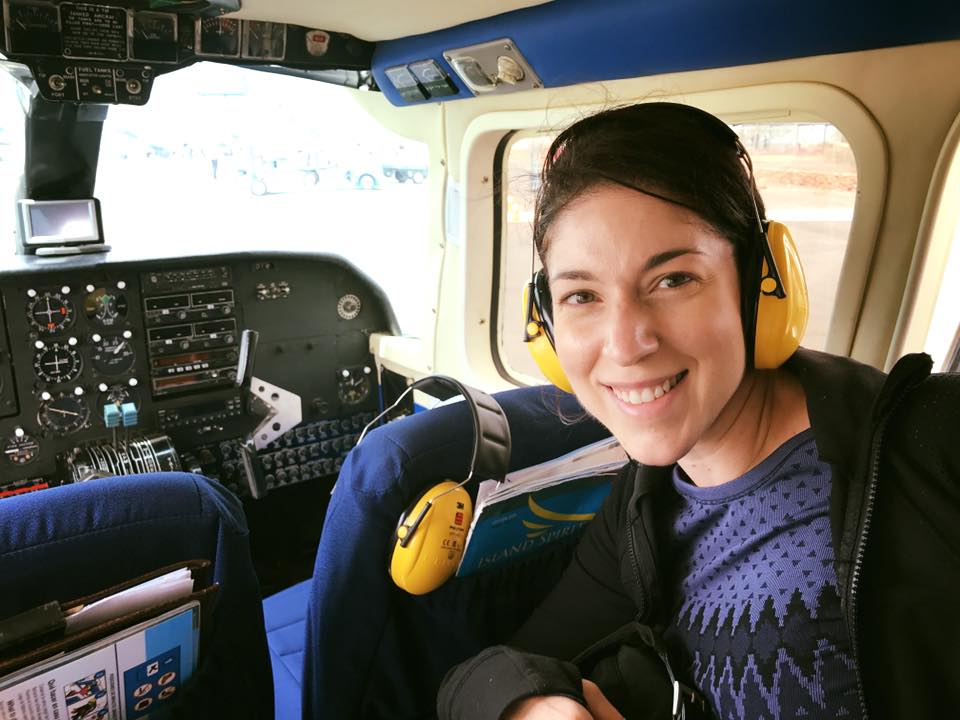 Try to sit in the first row for the best view!
Try to sit in the first row for the best view!
Arrival in the Galapagos
So, now that you have all the information you need to decide whether you are going on a land-based tour or on a cruise, you actually have to get to the Galapagos, and if you thought that was easy, think again. Allow me to open your world to a whole new set of logistics!
First, as we discussed above, you can enter the Galapagos from Baltra or San Cristobal. To do that you must fly to one of those places from either Quito or Guayaquil on either LATAM or TAME airlines. In my opinion, if you can get a direct flight from Quito to Baltra, take it. Otherwise, there is a flight that goes from Quito to Guayaquil to Baltra. When you land in Guayaquil, the Galapagos passengers stay on board for 30-40 minutes while the Guayaquil passengers deplane, and the new passengers come on board. The direct flight is about 2 hours. If you have to do the Guayaquil stopover, plan on 3 to 3.5 hours.
But, let’s not get ahead of ourselves. There is a whole process that needs to be done before you even board the flight in Quito or Guayaquil. Since we departed from Quito, I’ll give you the Quito rundown. Let me sum it up for you: Get to the airport early.
As soon as you enter the domestic terminal in Quito, go all the way to the right. You will see this: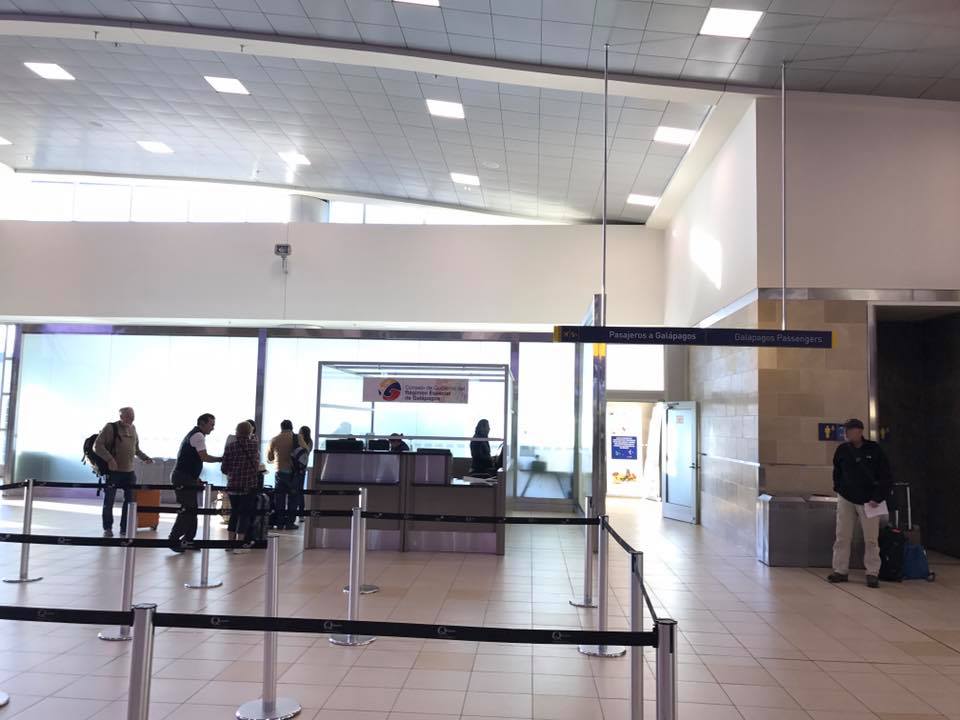
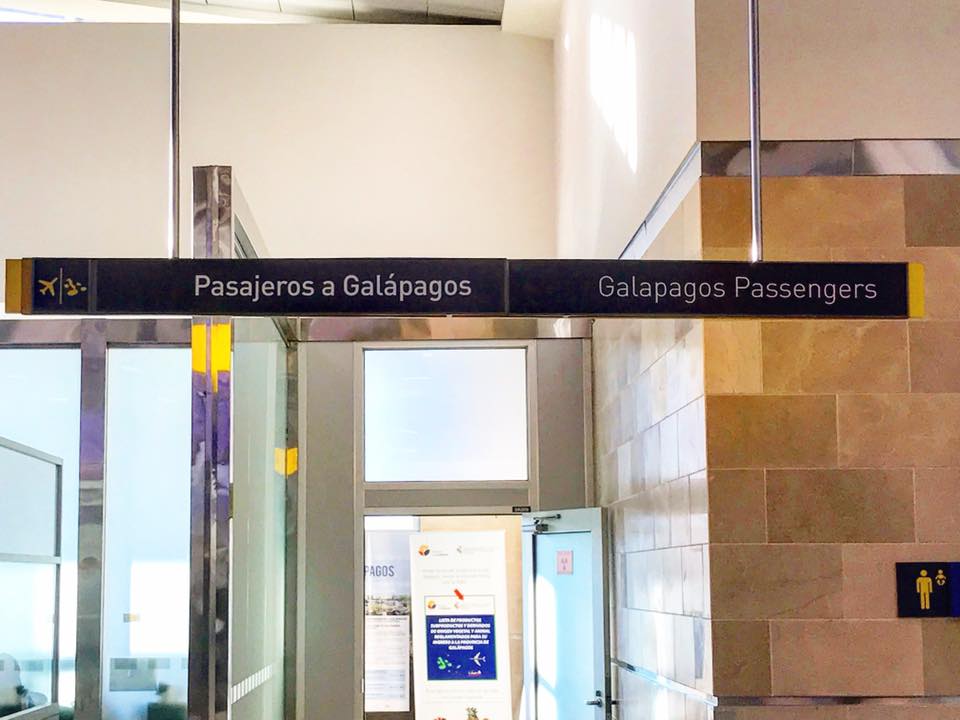
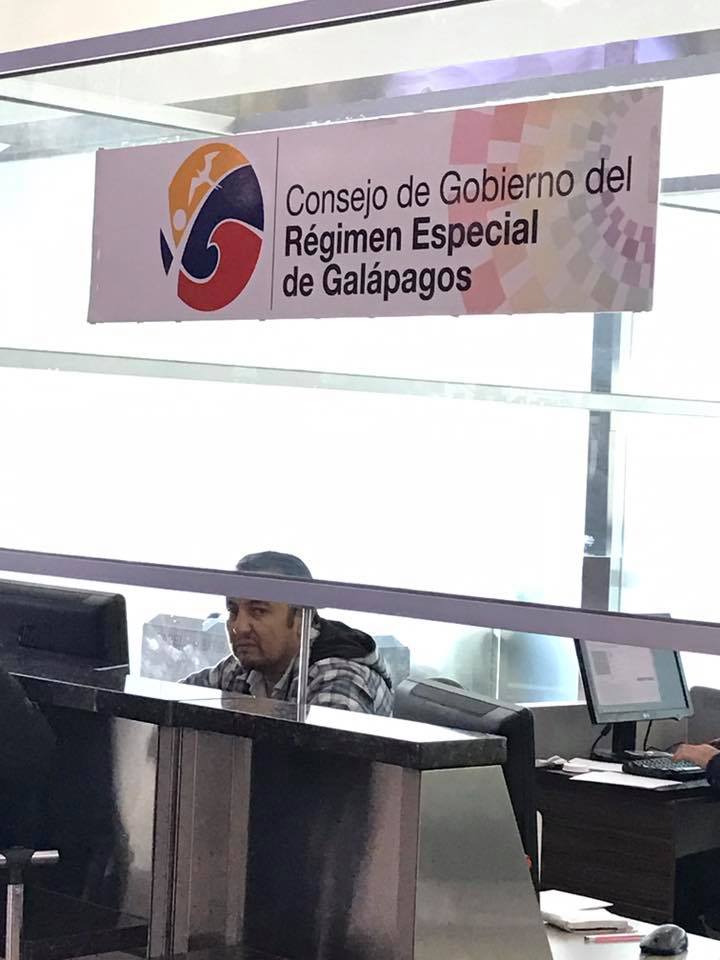 This is your first stop. You will need your passport, and you need to pay $20 USD per person IN CASH to buy a mandatory Galapagos Transit Card (IMPORTANT NOTE: When you arrive at your initial point of entry into the Galapagos Islands – again, for us, this was Baltra – you MUST ALSO PAY $100 USD IN CASH to purchase your mandatory Galapagos Islands license: a/k/a the Galapagos National Park Fee). They will issue you a paper that looks like a customs form. DO NOT LOSE IT. You will need to show it upon arrival and turn it in when you leave.
This is your first stop. You will need your passport, and you need to pay $20 USD per person IN CASH to buy a mandatory Galapagos Transit Card (IMPORTANT NOTE: When you arrive at your initial point of entry into the Galapagos Islands – again, for us, this was Baltra – you MUST ALSO PAY $100 USD IN CASH to purchase your mandatory Galapagos Islands license: a/k/a the Galapagos National Park Fee). They will issue you a paper that looks like a customs form. DO NOT LOSE IT. You will need to show it upon arrival and turn it in when you leave.
Up next, you must scan all of your luggage. At this point, airport personnel will place a plastic zip tie onto your luggage, such that it cannot be opened until it passes canine inspection in the Galapagos. Once you pay the $20 and collect your entrance ticket, you go here to get scanned and tagged: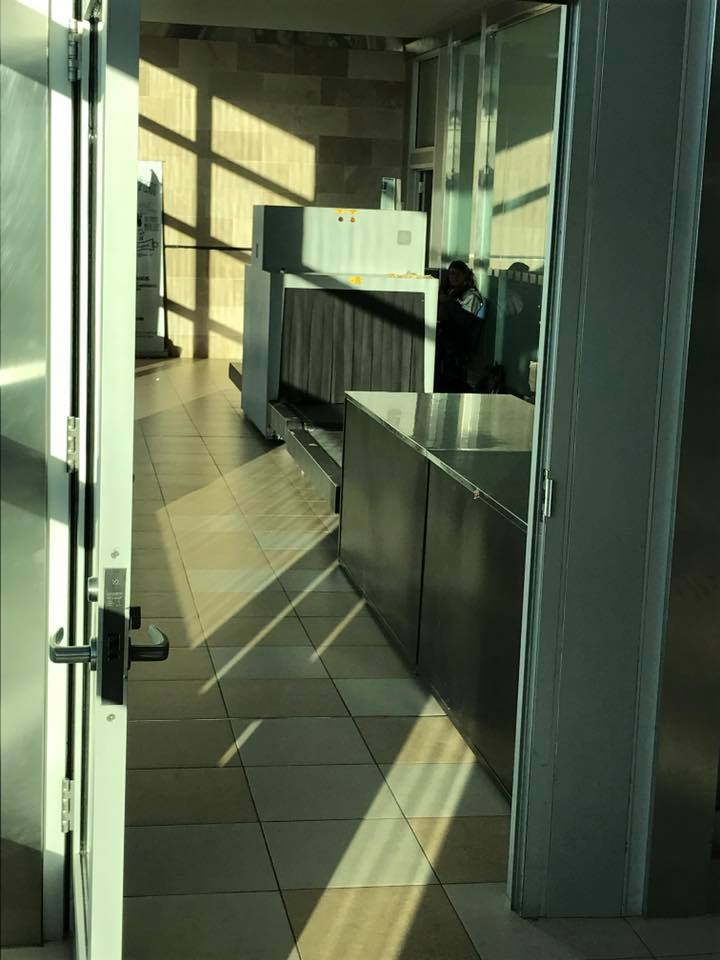
 Any unprocessed food or nuts will be confiscated. Only after you passed through here may you approach the counter to check in to your Galapagos flight. If you hire a travel agent, there is a local agent that takes you to the airport and does ALL of this for you while you comfortably sit and wait.
Any unprocessed food or nuts will be confiscated. Only after you passed through here may you approach the counter to check in to your Galapagos flight. If you hire a travel agent, there is a local agent that takes you to the airport and does ALL of this for you while you comfortably sit and wait. Once you get to the Galapagos, the real fun begins. First, you enter the airport and must pass through their customs. You will need your passport and the form mentioned previously (this is also where you will pay the aforementioned $100 USD Galapagos National Park Fee). You will also get a neat Galapagos passport stamp! Then they will scan your bags … again!
Once you get to the Galapagos, the real fun begins. First, you enter the airport and must pass through their customs. You will need your passport and the form mentioned previously (this is also where you will pay the aforementioned $100 USD Galapagos National Park Fee). You will also get a neat Galapagos passport stamp! Then they will scan your bags … again!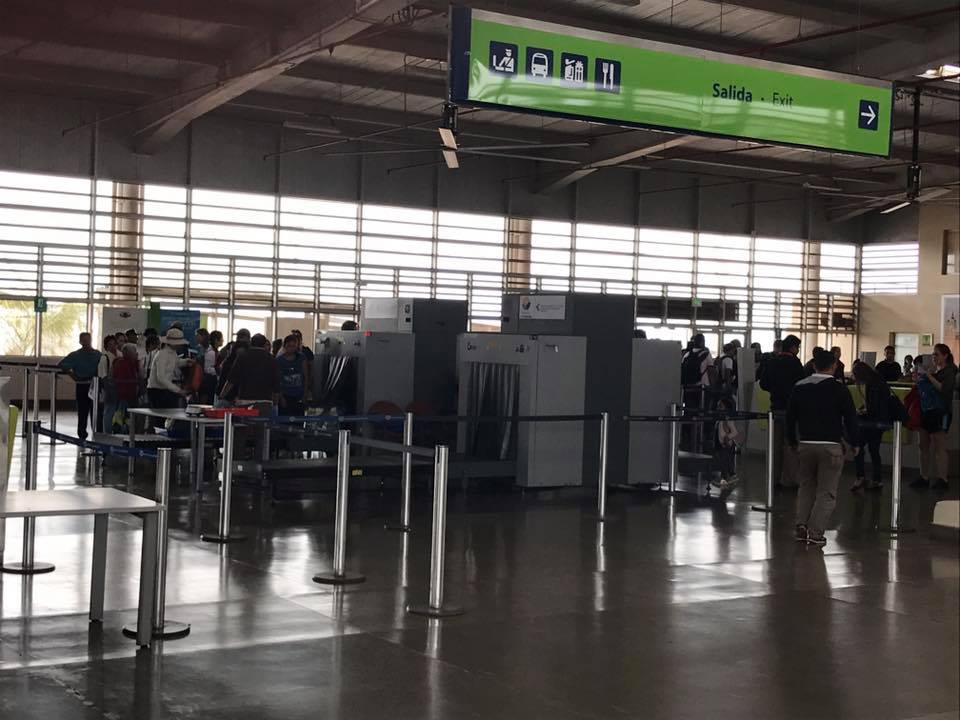
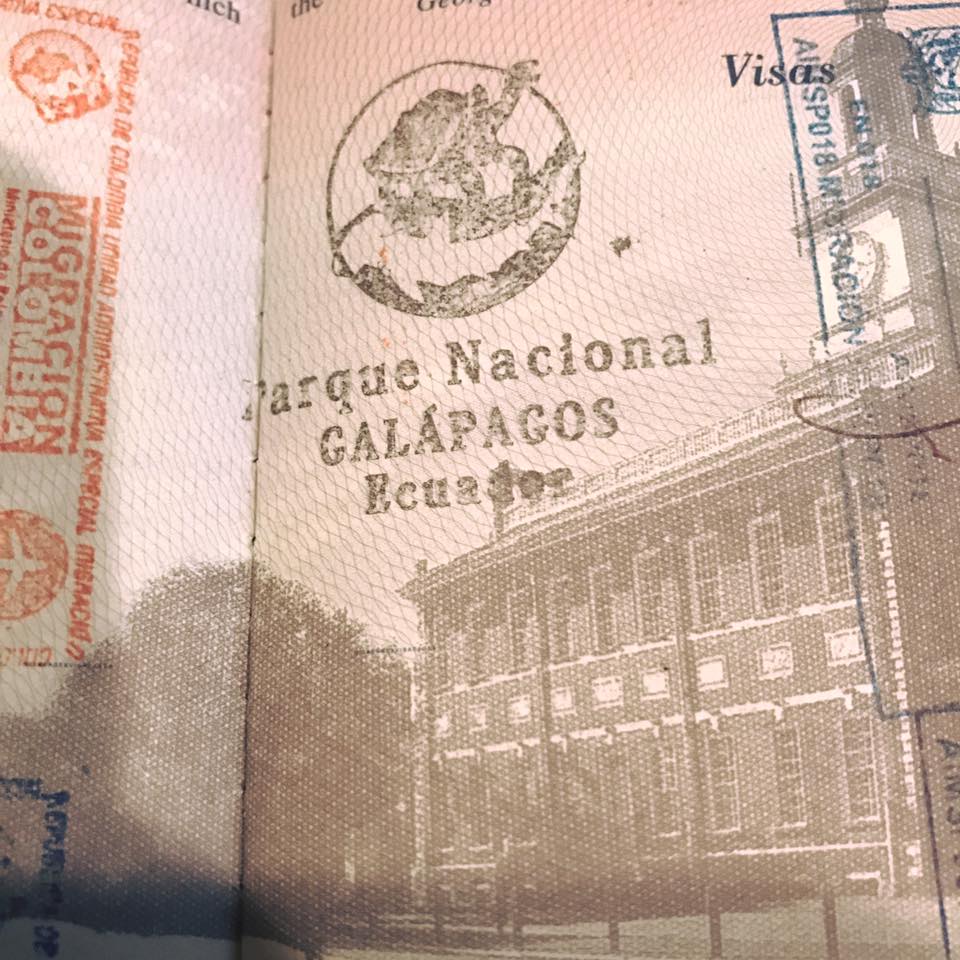 After this, you move to the luggage collection area. There is a long yellow line. You are not to cross this line and collect your bag until you are told to. Why? Well, your luggage gets checked again. By a dog; a fruit and vegetable contraband sniffing dog. So, all the luggage comes out and is lined up on belts. The dog comes around and sniffs each and every bag. If your bag passes the sniff test, then the plastic zip tie is cut off. Once all bags have been sniffed and approved, they allow you to collect your bag in what turns our to be a chaotic free-f0r-all!
After this, you move to the luggage collection area. There is a long yellow line. You are not to cross this line and collect your bag until you are told to. Why? Well, your luggage gets checked again. By a dog; a fruit and vegetable contraband sniffing dog. So, all the luggage comes out and is lined up on belts. The dog comes around and sniffs each and every bag. If your bag passes the sniff test, then the plastic zip tie is cut off. Once all bags have been sniffed and approved, they allow you to collect your bag in what turns our to be a chaotic free-f0r-all!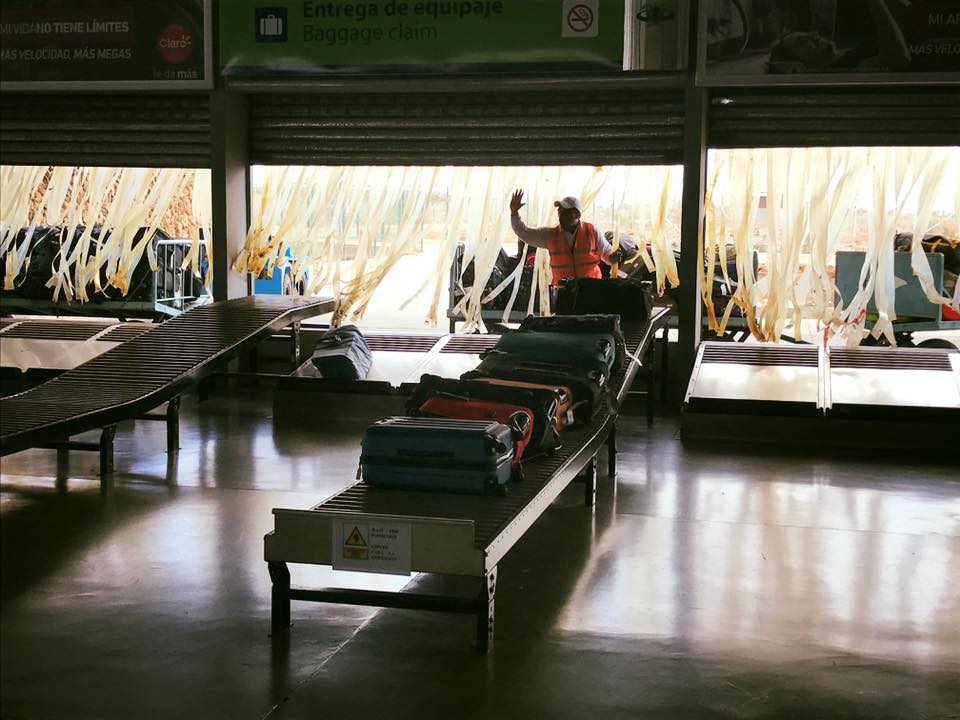

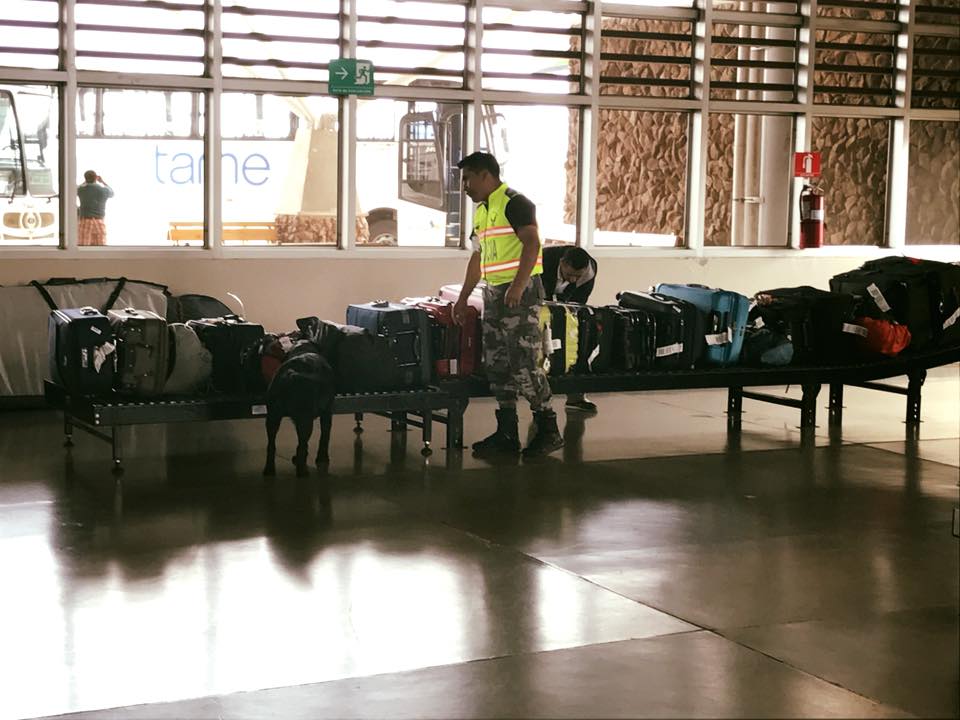
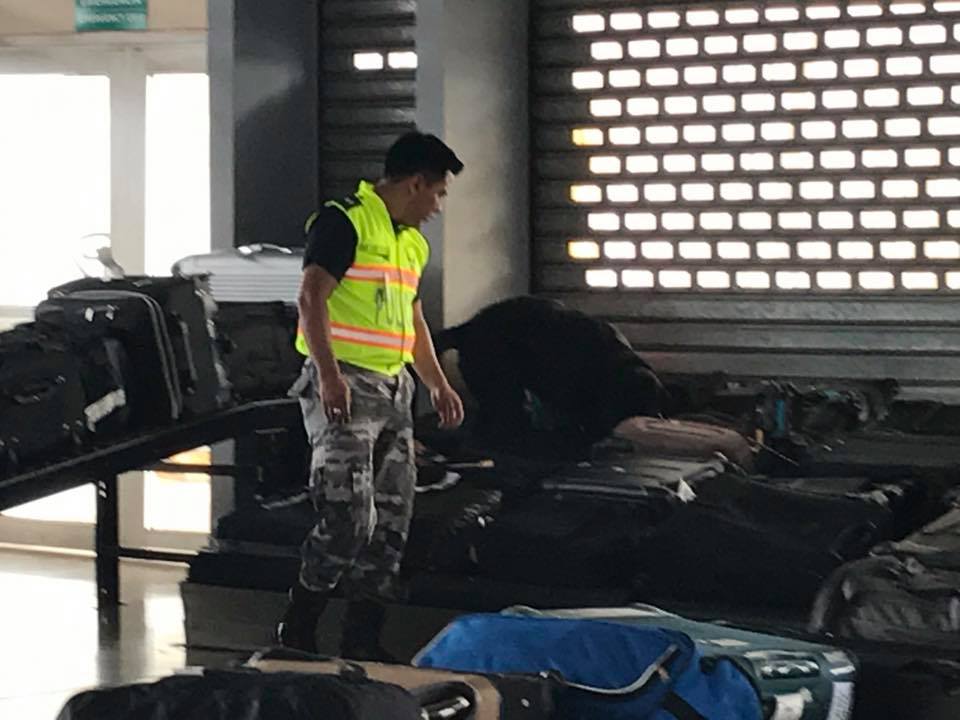
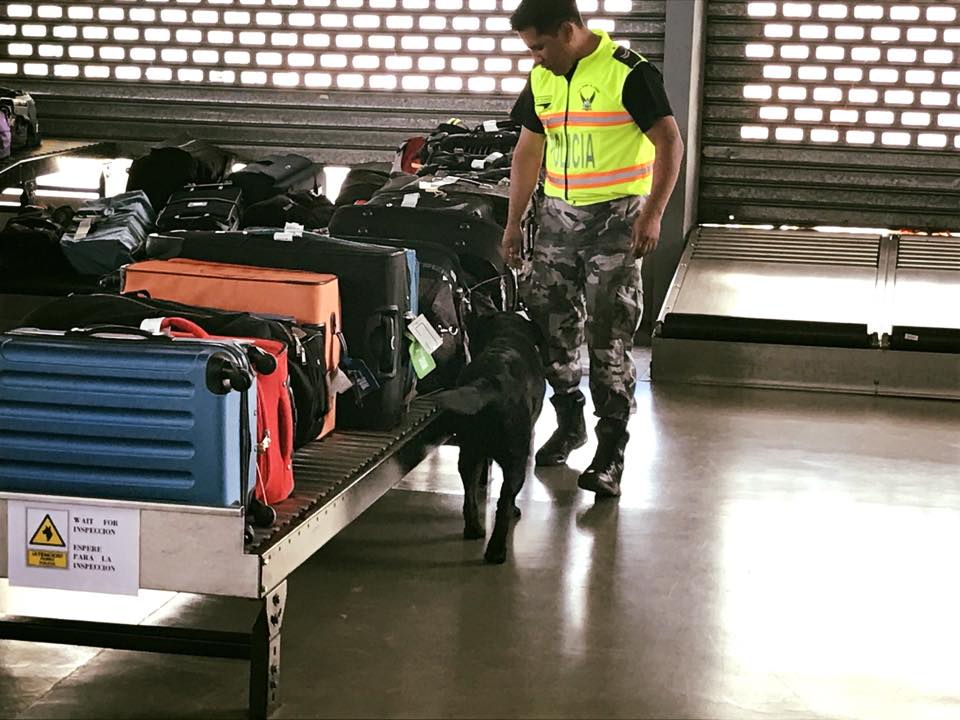 After you collect your bag, you either check in for your next flight if you are flying to Isabela or San Cristobal or you go out to catch the bus that will take you to Santa Cruz for your stay there or for your next ferry ride to Isabela or San Cristobal.
After you collect your bag, you either check in for your next flight if you are flying to Isabela or San Cristobal or you go out to catch the bus that will take you to Santa Cruz for your stay there or for your next ferry ride to Isabela or San Cristobal.
Whew! As you can now see, the logistics in the Galapagos can be challenging. If you wish to do this on your own, you probably will save a little money, but you will also spend a lot of time figuring things out and dealing with these logistics, which may cost you your sanity and precious vacation time! Also, if you run into a problems along the way, you will be left with no support, especially for the locally booked activities and tours.
Packing
So, one last thing before you go: a packing list. You will thank me for this later because you really need to pack as if you are going to an island and as if you were hiking.
First, try packing as light as possible. The water is cold in the Galapagos, but you can rent wet suits for $10, fins and a snorkel mask for $5 each, and life vests for $5 each. Also, all the tours will provide these and towels, so skip packing these if you can. If you have a prescription mask, then bring that.
During The Day
Like I explained above, most tours have a land and a water portion, so each day you need to be prepared for both. You will know which you are doing first ahead of time, and some of the day-boats have changing facilities if needed. You are going to need a day bag that can hold your change of clothes and shoes, and bring some large Ziploc bags or a dry bag as well.
For the water:
Depending on how long you are there, I would probably bring 4 bathing suits. You will be in the water daily, so they need time to dry. Also, bring water shoes. You sometimes have to do a wet landing in knee-deep water, and there are rocks. Also, you are literally on the equator, the sun is EXTREMELY strong here. So, please be sure to bring a couple of bottles of 100 SPF sunblock (Yes – that is a real thing) and apply often – like, very often. Trust me, you’ll be glad you did! Also, bring a rash guard shirt, a couple of lightweight long-sleeved shirts, and a hat. Bring the hat. You will SO thank me for this later! A light windbreaker or scarf for the boat is not a bad idea because it is windy. Finally, I would bring a couple cover-ups for ladies and flip flops. Bring SPF chap stick or lip care and sunglasses. Many of the guides wear a scarf that covers their face, and honestly, I now understand why.
For the land:
I wore gym clothes every day: sports bras, workout tops, and workout pants. I always had a lightweight long sleeve top, and I wished for a hat. Bring the hat. You can do shorts and t-shirts, too. Do not wear jeans during the day. You need lightweight, comfortable clothing. You will be transferring on and off boats and zodiacs, so keep that in mind. Bring good, thick hiking socks (ESPECIALLY if you are hiking Sierra Negra volcano) and comfortable sneakers or hiking shoes. Also, bring bug spray, and don’t forget your undergarments if you are changing during the day.
Miscellaneous
Even at the resorts, the Galapagos Islands are very casual, so you can get away with light dresses or jeans or shorts and t-shirts/tops for dinner. Bring aloe and after sun care products. Also, the waters can be very rough. Even if you do not get sea sick, I guarantee you that you will feel a little queasy at least once. Bring Dramamine. Bring a GoPro or underwater camera with all the charging and waterproofing supplies (Ecuador uses the US current so no need to bring converters and adapters). Bring a serious camera with lenses and your batteries and memory cards for the land portion. The photo ops are unreal!
Other than that, bring photocopies of all your relevant documents, chargers, some protein bars, your prescription meds, your over the counter meds (Advil, antacids, anti-diarrhea, etc.), your toiletries (including hand-sanitizer), your PJs, a lightweight rain jacket or poncho, a light sweater or jacket, binoculars, and a good book or your kindle!
Money
Also, bring cash. Ecuador uses the US Dollar, and while you can use credit cards at the hotels and most restaurants, you will need cash for tips and some restaurants or shops (and the $120/person Galapagos Park entry fees that I mentioned previously). It is better to have and not need than to need and not have, and ATMs are not as readily available. You should give a couple of bucks to baggage porters and cab/water-taxi drivers. The norm is to tip 10% at restaurants. After your tours, you will need to tip the guides, and, if you were on a boat, the crew. Typically, $10 per couple for a half day tour and $20 per couple for a full day tour for the guides are acceptable. Don’t forget the crew: about $15-$20 should be plenty.
Okay, you are all set! I hope this post helped you in your trip planning. I know it is a lot to digest, so if you need help or you have questions, send me an email or comment below. Otherwise, bon voyage!

This is Terrific info, thanks so much, 12 of us are going to the Galapagos Island at the end of May (2017). We’ll take advantage of this info!
Thank you! I am glad you found this post informative! I certainly wish I knew some of this information before we went there. Rest assured- the Galapagos Islands are remarkable and you are going to have a truly wonderful time. You are never going to want to leave! Check back in, and let me know how you enjoyed your trip!
Thank you for this information and the pictures!
My pleasure! Thanks for reading the blog!